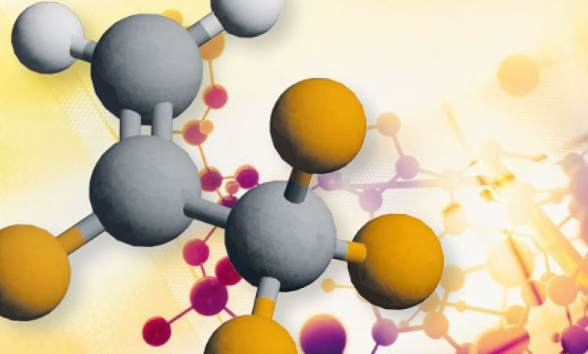
The aim of the AtmoChemECV project is to provide gas references traceable to the International System of Units (SI) with the required uncertainty to detect spacial gradients, shifts and/or long-term trends in the atmosphere. Target substances are reactive compounds, in particular those for which reference gas mixtures are not stable in cylinders or at least not at ambient molar fractions, and halogenated compounds. This project complements the European projects HIGHGAS and KEY-VOCs and focuses on:
• halogenated gases, including those banned by the Montreal Protocol
• volatile organic compounds (VOCs),
• water vapour at upper tropospheric level,
The Gas laboratory at METAS installed its first dynamic generation capabilities in 1998, based on the permeation method. The traceability to the SI is established through the use of magnetic suspension balances to determine permeation rates. Such dynamic methods produce reference gas mixtures constantly over time, making possible to eliminate transient effects such as adsorption on metal surfaces after the required stabilisation time. First used to produce reference mixtures for NO2, the facilities are now adapted to the production of reference mixtures for a large variety of compounds at atmospheric molar fractions, ranging from nmol/mol to pmol/mol.
Results
SF6 Inter-Comparison Experiment (SICE)
METAS participated in the SF6 Inter-Comparison Experiment (SICE) organised by KMA, Korea Meteorological Administration, World Calibration Centre for SF6 for the Global Atmosphere Watch (GAW) network. This intercomparison exercise took place from April 2016 to February 2017. For this, METAS prepared two SI-traceable mixtures for SF6 in synthetic air at 8 pmol/mol and 10 pmol/mol. The mixtures were stored in SilcoNert2000-coated stainless steel canisters. The comparison of METAS standards with the travelling cylinders was done by Empa by measurement on their Medusa-GC-MS. The report of this intercomparison is now available here.
Production of the first SI-traceable reference scales for CFC-13, HFC-1234yf and HCFC-132b
The work done by the Gas laboratory at METAS and the Group for Climate Gases at Empa led to the realisation of SI-traceable suites of reference gas mixtures (or primary calibration scale) for SF6, HFC-125, HFC-1234yf, HCFC-132b and CFC-13. Mixtures were prepared in synthetic air, filled in 11 cylinders at slightly varying molar fractions. The prepared suite was designed in order to combine the advantages of SI-traceable reference gas mixture preparation with a calibration scale system for its use as anchor by a monitoring network. Comparison to other available calibration scales demonstrated the concordance of the different primary standards, within stated uncertainties.
This work led to the adoption in October 2017 of the METAS-2017 primary calibration scale for CFC-13 as the official reference scale by the AGAGE (Advanced Global Atmospheric Gases Experiment) network.
Publications:
Dynamic production of reference gas mixtures for VOCs using portable generator ReGaS2
Within the framework of the KEY-VOCs project, METAS participated in 2017 in a European intercomparison for VOCs. Reference gas mixtures could be generated on-site for limonene, methyl vinyl ketone and ethanol using calibrated permeation devices placed in a portable generator ('ReGaS2') containing a permeation chamber and a dynamic dilution system. Some of the results are in review in the Open-Access journal Atmospheric Measurement Techniques and in the KEY-VOCs final report. METAS participated in 2018 in the International Comparison CCQM-K10:2018, 5 nmol/mol BTEX in nitrogen. The official report is in progress.
Cryo filling system
An automated cryo filling system was developed to fill reference dynamically generated gas mixtures into cylinders without the need of a pump. The system was successfully validated. Leak testing, the rinsing procedure of the system and the filling of cylinders are automated. Since the system is to a large degree coated with SilcoNert 2000, it can be used for reactive compounds such as VOCs or halogenated gases.
Within the framework of AtmoChemECV, SI-traceable reference gas mixtures containing HFC-32, HFC-365mfc, HFC-1234yf, CH2Cl2 and CCl4 are going to be produced and filled in a suite of cylinders.
Publications:
Water vapour
METAS successfully participated in 2015 in the International Comparison CCQM-K116: 10 μmol/mol water vapour in nitrogen. The official report is here.
In 2019, a lightweight instrument to measure water vapor up to the lower stratosphere aboard meteorological balloons developed by the laser spectroscopy group of EMPA was tested at METAS. METAS generated SI-traceable water vapour reference gas mixtures in the low µmol/mol range at pressures down to 50 mbar a. This cooperation led to a follow up project starting in September 2020 called "ALBATROSS" (Balloon-borne laser spectrometer for UTLS water research) financed by MeteoSwiss in the framework of GCOS Switzerland.
VOCs
Certain volatile organic compounds are not stable in cylinders and therefore reference gas mixtures containing such reactive substances need to be generated dynamically. For the dynamic generation permeation tubes are calibrated in magnetic suspension balances. However, the permeation rate of such VOCs is often not stable. We were able to identify conditions to achieve stable permeation rates with an uncertainty below 5 % (k = 2) for methyl vinyl ketone, methyl ethyl ketone and beta-pinene.
Last modification 04.04.2022





